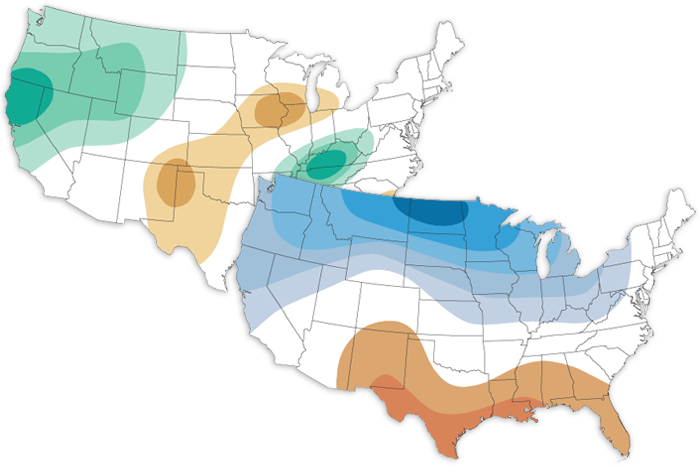Despite the cooling influence of La Niña, 2022 was the sixth-warmest year on record.
The January 2023 climate outlook favors a wetter-than-average start to the new year for the western US, northern Plains, Great Lakes and Tennessee Valley, and a warmer-than-average month for the central and eastern United States.
Two guest bloggers explain how Rossby waves create a globe-spanning superhighway that connects climate patterns even when they are far apart.
Snow-cover duration continued a longer-term pattern in 2021–22, of significantly faster springtime snowmelt.
Ship traffic is increasing as sea ice dwindles—not just in near-shore, territorial waters of Arctic coastal countries, but increasingly, in the high seas of the Central Arctic Ocean.
The 2022 melt season on the Greenland Ice Sheet started slowly, but ended late, with multiple melt spikes in September.
Arctic temperatures over 2021-22 were the sixth-warmest on record, based on records dating back to 1900.
Highlights from the 2022 update to NOAA's Arctic Report Card in maps and charts.

The December 2022 climate outlook favors a colder-than-average month across the northern US, and a warmer-than-average month across the southern US. Meanwhile, odds are tilted towards a wetter-than-average December for the West and Ohio and Tennessee Valleys.
Earth had its fourth-warmest October on record.